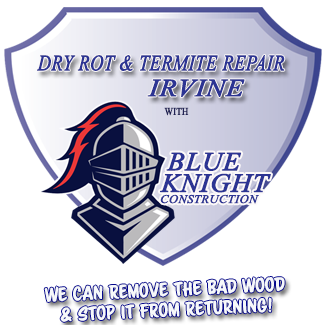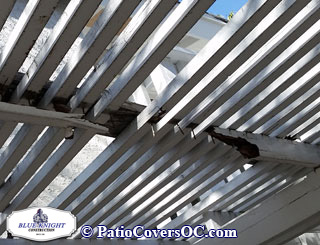
 Dry Rot Causes
Dry Rot Causes
Water is the enemy of wood! Although we've all heard the term "Dry Rot", dry wood will not rot generally.
More wood is replaced each year because of decay damage than all other home maintenance items! Commonly called Dry Rot, wood destroying fungi need three things to survive: air, water, and food. Since we can't eliminate air and their food is the wood in our homes, the only mechanical control mechanism available to us is the elimination of water.
Dry Rot and dry rot repair are extremely destructive and costly. It can be frustrating when we realize that we are in an ongoing and never ending battle between us and these forces. It doesn't have to be that way if you change the environment in which they live and thrive. Keep it dry! We know that works and we know how to do it.
In the spirit of keeping it simple and relevant, I won't go into too much detail and all the types and stages of Dry Rot. The main thing we need to know is how to prevent it from reoccurring year after year. As homeowners, we already know how destructive Dry Rot and dry rot repair are to our homes and exterior structures.

Common types of wood decay:

• Brown Rot: This type of decay causes the wood to break down into brown cubes that split against the grain. Advanced stages of brown decay result in dry, powdery wood that is unable to support much weight, and crumbles easily.
• Dry Rot: A misnomer, this term has been used to describe decayed wood that has since dried and ceased decaying. Some people may erroneously assume that the wood is still in the process of decay. Moisture is required for wood decay to occur, so no literal "Dry Rot" exists.
• Although wood-destroying insects, such as dryrotrepair, are attracted to decayed wood, they also inhabit sound wood. Always probe or use the pick test to confirm that what you've found is sound wood.
